[Flávio Bittencourt]
A casa dançante em Praga, em homenagem a Fred Astaire e Ginger Rogers
O projeto do prédio Tančící dům, de escritórios, no centro de Praga, República Tcheca, foi assinado pelos arquitetos Vlado Milunić, croata-tcheco, e Frank Gehry, canadense.

"Blade Runner's Los Angeles" [A CIDADE DE LOS ANGELES (EUA, EM 2019) DO FILME (de 1982) BLADE RUNNER, dirigido por Ridley Scott]
(http://www.seanax.com/2009/04/24/blade-runner-wake-up-time-to-die/)
"(...) Como [O PRÉDIO DANÇANTE] é situado em uma rua [DE PRAGA] bastante movimentada, o prédio depende de circulação forçada de ar, fazendo com que o interior fique menos agradável aos ocupantes. (...)"
(WIKIPÉDIA, verbete 'CASA DANÇANTE', versão em idioma português,
sendo que o grifo no eufemismo que substitui a vocábulo 'DESAGRADÁVEL'
não está no original)
"Minhas células são meu curriculo"
"Acorda, é hora de morrer"
(http://theeendd.blogspot.com/2010/12/cinco-frases.html,
sendo que a "replicante" [PERSONAGEM-ROBÔ DO FILME] acima filmada e fotografada
é uma personagem "má")

APAIXONADA E ARDENTE CENA DE EXPRESSÃO DE AMOR SINCERO
(de personagens do filme BLADE RUNNER, O CAÇADOR DE ANDRÓIDES),
MAS A NAMORADA DO CIDADÃO É UMA replicante (MÁQUINA, ROBÔ,
ANDRÓIDE) "DO BEM"
(SÓ A FOTO DE CENA, SEM O COMENTÁRIO ACIMA EXARADO:
http://nunoguronsan.blogspot.com/)
SOBRE O FILME FICCIONAL DE LONGA-METRAGEM,
SOCIOFILOSÓFICO, DA MAIOR IMPORTÂNCIA NA ATUALIDADE,
DO INFELIZMENTE JÁ FALECIDO CINEASTA, ATOR E
PENSADOR FRANCÊS JACQUES TATI
[ATENÇÃO: A SEGUNDA FOTO DE CENÁRIO
NÃO MOSTRA ESCRITÓRIOS, MAS "casas",
RESIDÊNCIAS HORRENDAMENTE
"funcionalizadas", REPLETAS DE APETRECHOS
TECNODOMÉSTICOS E OBJETOS ASSEMELHADOS:
"Play Time

“Jacques Tati’s 1967 Playtime depicts an urban enclave of International-Style architecture, ubiquitous technology, commodified encounters, and alienated people that manages, somehow, to result in a comedic romance in which folks learn to find their way in a city that doesn’t function as efficiently as its planners would hope…” [(O filme) Playtime, de Jacques Tati, 1967, retrata um enclave urbano de estilo internacional de arquitetura, tecnologia ubíqua [ONIPRESENTE] [*], encontros mercantilizados e pessoas alienadas que gerenciam, de alguma forma, para resultar num enredo cômico em que gente [**] aprende a encontrar o seu caminho numa cidade que não funciona tão eficientemente quanto os seus planejadores desejariam...]
[*] - UBIQUIDADE = O fato de estar presente em toda a parte ao mesmo tempo.
[**] - PARECE HAVER QUESTÃO CONTROVERSA DE TRADUÇÃO, NESTE PONTO DA TRADUÇÃO PARA O PORTUGUÊS, DESSE PERÍODO TEXTUAL (originalmente) ELABORADO POR ANNE GALLOWAY: SOBRE A DISTINÇÃO ENTRE people E folks, LEIA, POR FAVOR, O TEXTO AO FINAL TRANSCRITO.

(http://www.spaceandculture.org/2007/03/30/play-time/,
O TEXTO É DE AUTORIA DE ANNE GALLOWAY)
"O PRÉDIO UM TANTO ESTRANHO DO CENTRO COMERCIAL DE PRAGA,
REPÚBLICA TCHECA, FOI CONSTRUÍDO NO LOCAL ONDE ESTAVA
UM EDIFICAÇÃO DESTRUIDA POR PESADO BOMBARDEIO DA
SEGUNDA GUERRA MUNDIAL (1945)"
(COLUNA "Recontando estórias do domínio público")

PRESLEY, SINATRA E ASTAIRE
(http://rozanipereira.blogspot.com/2010/05/fred-astaire.html)
.jpg)
DANÇARINOS - sendo um deles infante - NO SOLO,
MAS PARECE QUE ESTÃO PLANANDO NO AR
(SEM A LEGENDA ACIMA REDIGIDA:
http://rozanipereira.blogspot.com/2010/05/fred-astaire.html)

ROSTO DA FOTOGRAFIA DO GARI QUE VOA: SR. RENATO SORRISO,
o Gari Sorriso, vencedor do Concurso "Carioca Gente Boa", março de 2008
(FOTO, SEM A LEGENDA ACIMA CONTRUÍDA,
COM INFORMAÇÕES ACIMA TAMBÉM APRESENTADAS:
http://diariodorio.com/gari-sorriso-o-carioca-gente-boa/)
(http://robertdilema.blogspot.com/2010/01/grande-rio-2010_27.html,
TENDO SIDO, nesse blog, A PESQUISA SOBRE ESCOLAS DE SAMBA FEITA POR JÉSSICA TELLES)

"Momentos antes do desfile [CARNAVALESCO], a atriz [PAOLA OLIVEIRA] contou sobre a expectativa e agradeceu o público que gritou seu nome do lado de fora da [AVENIDA MARQUÊS DE] Sapucaí [ONDE SE REALIZA O DESFILE DE ESCOLAS DE SAMBA DO PRIMEIRO GRUPO, NO CARNAVAL (RIO)]. 'Adoro esse friozinho na barriga. É um dos momentos mais felizes da minha vida. Fico feliz por estar pelo 2° ano consecutivo à frente dessa bateria tão querida.' "

(PAOLA OLIVEIRA E ALA DOS GARIS DO G. R. E. S. ACADÊMICOS DO GRANDE RIO,
QUEM online PONTO COM (COLUNAS PONTO QUEM PONTO GLOBO PONTO COM)
http://colunas.quem.globo.com/carnaval2010/category/rio-de-janeiro/page/10/)
"Com muito samba no pé, o gari Renato Sorriso cumpriu a tradição de alegrar o público presente na Marques de Sapucaí nesta terça-feira.

Ele também aproveitou para sambar com celebridades no camarote [RESERVADO PELOS ADMINISTRADORES DA FÁBRICA DE CERVEJA] Nova Schin e ainda presenteou a atriz Fernanda Rodrigues com um “souvenir”, uma mini-vassoura autografada. Detalhe: o gari é garoto-propaganda de outra cervejaria…

Fotos: Cleomir Tavares/Divulgação".
(http://www.abril.com.br/blog/carnaval-2009/tag/carnaval-2009/page/2/)
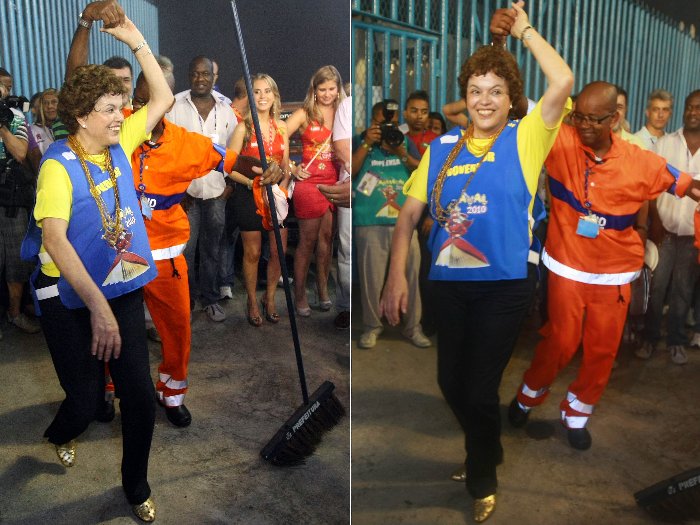
A ATUAL PRESIDENTE DO BRASIL - quando ainda era candidata - DANÇA COM UM
PROFISSIONAL DA LIMPEZA URBANA DO MUNICÍPIO DO RIO DE JANEIRO,
NO CARNAVAL
(Foto: Agência Estado,
SÓ A FOTO: http://noticias.r7.com/carnaval2010/noticias/rio-de-janeiro/dilma-danca-com-garis-na-sapucai-20100215.html)

O SAUDOSO ATOR E DANÇARINO ESTADUNIDENSE FRED ASTAIRE, TRABALHANDO
(http://filmesatuais-psique66.blogspot.com/2010/08/fred-astaire-collection.html)

SIMULACRO REPRESENTACIONAL DE GINGER ROGERS E FRED ASTAIRE
DANÇANDO SOBRE UM PIANO BRANCO:
VEJA MATÉRIA DE ONTEM, "HISTÓRIA DO PIANO":
http://www.portalentretextos.com.br/colunas/recontando-estorias-do-dominio-publico/historia-do-piano,236,5366.html
(SÓ A FOTO, SEM A LEGENDA ACIMA REDIGIDA, EM:
http://www.image-archeology.com/Movieland_Wax_Museum_Buena_Park_California_Ginger_Rogers_and_Fred_Astaire_GW553.jpg)
OS IMORTAIS GINGER ROGERS E FRED ASTAIRE, DUPLA DANÇANTE
QUE VIROU PRÉDIO NA CAPITAL DA REPÚBLICA TCHECA:



"EM PRAGA, REPÚBLICA TCHECA, UM PRÉDIO ESTÁ DANÇANDO"
(COLUNA "Recontando estórias do domínio público")
EM HOMENAGEM A MEU TIO
BENJAMIN UCHÔA BITTENCOURT (1933 - 1995) - in memoriam -
QUE TINHA, EM FITAS DE VÍDEO VHS, A MAIORIA DOS FILMES
EM QUE ASTAIRE DANÇAVA - com Ginger Rogers e
com outras atrizes-dançarinas -, EM MEMÓRIA DE
JACQUES TATI, ELVIS PRESLEY, FRANK SINATRA, FRED ASTAIRE,
GINGER ROGERS e as outras atrizes-dançarinas que com Astaire dançaram E
AS PESSOAS JÁ FALECIDAS QUE AJUDARAM A CONSTRUIR O MONUMENTO
CULTURAL DA CONTEMPORANEIDADE DENOMINADO filme Play Time E
A FABULOSA PELÍCULA DENOMINADA Blade Runner - como o filme Gattaca -
e a Paola Oliveira, Renato Sorriso, Dilma Roussef, o gari que dança, na foto, com a atual presidente do Brasil, o menino que dança, na foto, com Fred Astaire, os integrantes que aparecem na foto - e os que nela não aparecem - da Ala dos Garis do G. R. E. S. Acadêmicos do Grande Rio (Duque de Caxias-RJ), Fernanda Rodrigues, Jéssica Telles, Maeve Maddox, as pessoas que trabalharam nas produções de PLAY TIME e BLADE RUNNER, O CAÇADOR DE ANDRÓIDES e GATTACA - EXPERIÊNCIA GENÉTICA (as que felizmente ainda estão vivas) desejando a todos eles saúde, vida longa e um Feliz 2011!
6.1.2011 - Quando ouvi falar sobre essa estranha edificação, lembrei-me logo do filme francês PLAY TIME, de Jacques Tati - PLAY TIME não é exatamente "um filme", mas é uma declaração de espanto. E A CASA DANÇANTE, EM PRAGA, REPÚBLICA TCHECA, é um espanto. É claro que saber que A CASA DANÇANTE é um PRÉDIO COMERCIAL fez deflaglar essa associação de idéias, mas não sei se outras pessoas - AS QUE ASSISTIRAM A PLAY TIME, evidentemente - produziriam essa associação, na mente delas. (EM PLAY TIME, QUANDO UM APARTAMENTO RESIDENCIAL QUE ESTÁ SITUADO NO CONTEXTO ABSURDO DAQUELES CENTROS COMERCIAIS INIMAGINÁVEIS APARECE COM PESSOAS QUE ALI MORAM SE MOVIMENTANDO COMO SE NUM ESCRITÓRIO ESTIVESSEM, O RESULTADO É QUE TALVEZ SÓ NOS RESTEM PRECES A FAZER E, SE SE TRATAR DE ATEUS E AGNÓSTICOS, TORCIDAS FERVOROSAS, ARRELIGIOSAS, PARA QUE O CAMINHO ATUAL DA HUMANIDADE MUDE, com ou sem epifanias e milagres de boas transformações, atualmente necessárias, sem dúvida...). F. A. L. Bittencourt ([email protected])
WIKIPÉDIA, 'The dancing house', Praga
(em português)
"Casa Dançante
A Casa Dançante (em checo Tančící dům) é um prédio de escritórios no centro de Praga, na República Checa. Ela foi desenhada pelo arquiteto Vlado Milunić, em cooperação com o arquiteto canadense Frank Gehry em uma área ribeirinha vazia na qual havia um prédio que foi destruído durante o Bombardeio de Praga, em 1945. A construção iniciou em 1994 e terminou em 1996.
O estilo não tradicional era muito controverso na época. O presidente checo Václav Havel, que viveu próximo por décadas apoiou o projeto, esperando que o prédio se tornasse um centro de atividades culturais.
Originalmente chamada Fred e Ginger (Fred Astaire e Ginger Rogers - a casa lembra vagamente um par de dançarinos) a casa se situa entre os prédios neobarroco, neogótico e art nouveau pelos quais Praga é famosa.
Na cobertura existe um restaurante francês com vistas magníficas da cidade. Os planos de se tornar um centro cultural não foi realizado. Hoje é um prédio comercial com firmas multinacionais. Como é situado em uma rua bastante movimentada, o prédio depende de circulação forçada de ar, fazendo com que o interior fique menos agradável aos ocupantes.
Ligações externas
===
COMENTÁRIOS À "POSTAGEM" INÍCIO TRANSCRITA,
SOBRE PLAY TIME
(http://historiaeteoriadodesign.blogspot.com/2009/05/este-e-um-projecto-megalomano-de.html)
===
VERBETE 'PLAYTIME', WIKIPÉDIA
(em espanhol)
"Playtime
Playtime es una película francesa del director Jacques Tati. La trama de la película trata del París modernista de finales de los años 1960 y principios de los 70. Se rodó entre 1964 y 1967, estrenándose en 1967.
Sinopsis
La trama se articula en torno a seis escenas. Como hilo de unión entre las escenas hay dos personajes Barbara, joven turista americana que visita París y Monsieur Hulot que ha de asistir a una importante cita. La seis escenas son:
- El aeropuerto: Un grupo de turistas americanos llega a Orly y descubre un París futurista hecho de fríos e impersonales edificios de cristal y acero.
- Las oficinas: Monsieur Hulot acude a una reunión importante pero se pierde en un laberinto de oficinas y acaba en una exposición.
- La exposición de invenciones: Hulot y los turistas americanos contemplan nuevas invenciones incluyendo una puerta silenciosa y un cepillo con las linternas.
- Los apartamentos con las paredes de cristal: Ya de noche, Hulot se encuentra con un viejo amigo del servicio militar que le invita a su piso ultra-moderno.
- El Jardín Real: Hulot, escapando de su amigo, se encuentra en la inauguración de un restaurante nuevo con los turistas americanos. Sin embargo, las obras del edificio apenas han acabado y hay varios problemas.
- El carrusel de coches: Entre vehículos, semejando un ballet, el coche de los turistas vuelve al aeropuerto.
Recepción
En su estreno original en Francia, Playtime fue aclamada por los críticos. Sin embargo, fue un fracaso comercial, no pudiendo recuperar una porción significativa de sus costes de producción. Una razón pudo ser la insistencia de Tati en limitar la proyección a salas equipadas con proyectores de 70 mm (rechazó proporcionar una versión de 35 mm para cines más pequeños) y equipos especiales de sonido estéreo.
Los resultados fueron similares con el lanzamiento de la película en los Estados Unidos en 1973. Debido la insistencia de las distribuidores de los Estados Unidos finalmente había sido convertida a 35 mm y reducido su metraje a 103 minutos. A pesar de este fracaso comercial, Vincent Canby del New York Times calificó la película como la más brillante de Tati.
Las deudas contraídas por Tati a causa de Playtime y su posterior fracaso comercial lo acabaron llevando a la bancarrota.
===
ARTIGO "Folks versus People", POR MAEVE MADDOX
"Recently I was amused to hear Jon Stewart express bewilderment at George Bush’s continued use of the word folks in inappropriate contexts. This is one of many of the President’s peculiarities of speech that has bothered me for some time. Stewart was referring to this remark in the President’s July 4 speech:
Many of the spectacular car bombings and killings you see are as a result of al Qaeda — the very same folks that attacked us on September the 11th.”
Folks is not–at least it hasn’t been since Chaucer’s time–an exact synonym for people. Whereas people is a standard word that may be used in any context, folks is a colloquialism with definite connotations.
Folks generally suggests a certain warmth and “down home” flavor. Just as kids is not the most appropriate word to use when talking about young people who have robbed a store and beaten its owner, folks is probably not the best word to use when referring to people who go around blowing up shoppers at the local market or mourners at a funeral.
The word folk can refer to a group of people related in some way, either by blood or by occupation. For example, one can speak of “farmer folk” as well as “the German folk.” When used to refer to members of a nation, folk usually carries the connotation of “the common people.” Folklore is the study or body of stories and beliefs of the “common” people. Likewise folk music is less sophisticated than classical or pop.
The adjective folksy implies the relaxed, informal behavior and speech associated with rural people. President Bush, for example, wins many of his supporters by projecting a folksy Texas image that belies his expensive education at an Andover prep school and at Yale and Harvard universities.
The word people can mean something other than “human beings in general.” In expressions like the motto “the People rule,” people has the sense of the public, all of the people as a political entity. The phrase “you people” is sometimes used to lump people for criticism, as in “You people don’t know what you’re talking about!” or even simply “You people!”
Small mythical humanoid creatures, like leprechauns, may be called either “the Little People” or “the Little Folk.”
In addition to being the most usual noun for human beings considered collectively, people can also be used as a verb meaning “to populate” or “give birth to more human beings”: According to the Hebrew Book of Genesis, Adam and Eve peopled the earth with their descendants.
Unlike “my folks” which means “my family members,” the expression “my people” seems to mean “people who work for me” or “people who look out for my interests.”
Only time will tell what finally happens with folks. Heard frequently enough, nonstandard usage comes to sound 'right' ". (MAEVE MADDOX,
http://www.dailywritingtips.com/folks-versus-people/,
DIREITOS AUTORAIS RESERVADOS,
ARTIGO AQUI TRANSCRITO SEM FINALIDADE LUCRATIVAS,
EM REFLEXÃO SOBRE MELHOR TRADUÇÃO DE PERÍODO
TEORICAMENTE RELEVANTE, CRÍTICO, SOBRE UM FILME
CLÁSSICO DE JACQUES TATI [Play Time, França, 1967])




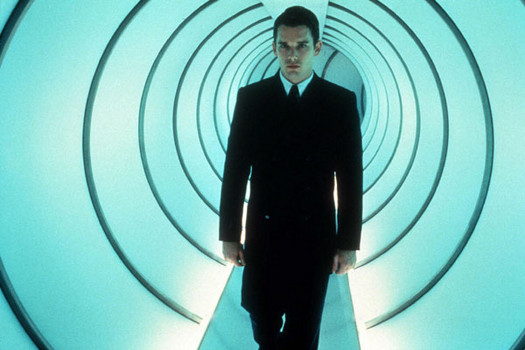





.jpg)
















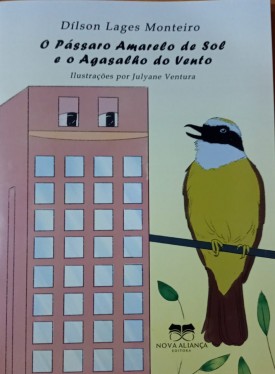
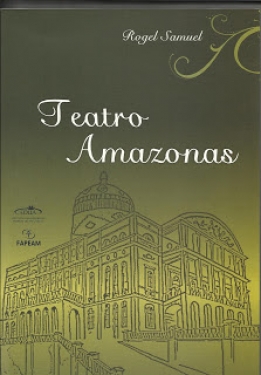
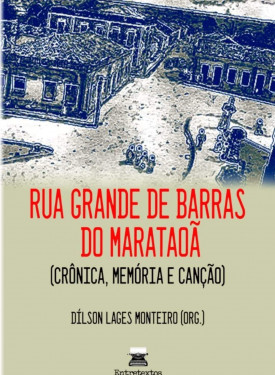
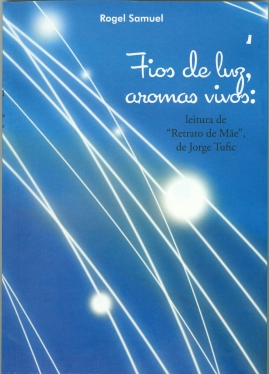




thanks alot for this, i’m currently looking for film’s with an architectural element. this one sure fit’s my need’s.
I don’t know who the author of this description of Playtime is, but I take issue with one particular comment found therein: that Tati’s film, like those of Charlie Chaplin, can be viewed silent “with little difference in effect.” I understand that this suggestion was intended to align the genius of Tati’s physical comedy with that of Chaplin, and I think the comparison is valid. But I think this point can be made equally well without discounting the soundtrack. The suggestion that you can “get” a Tati film without listening to it does an egregious disservice to Tati’s enormous labour on the sound design. Playtime is a film about acoustic ecology as much as anything else. I know of no account of Tati that doesn’t emphasize the importance of his use of sound, so this comment is a bit baffling – especially since earlier in the description the author DOES mention the soundscape of the film. The number of sociopolitically loaded sound-gags in this film is so large that to view it silent would destroy the experience beyond repair. If there was no sound, would we laugh when the seemingly non-diegetic music at the end of the film comes to a stop, only to begin again as a motorist plugs his parking meter as though it were a jukebox? Would the theme of human isolation within the international architectural style play out nearly as well if Tati didn’t build such a strong contrast between the stifled and electrically charged interior of the glass waiting room and the open environmental soundscape that exists just outside? Such examples are endless in each and every one of Tati’s films. He was one of the world’s great sound designers, and I am unaware of any filmmaker whose work would be harmed more by neglecting attention to the soundtrack.
My two cents.
art torrents, you’re welcome.
randolph, the author is Dr. Andrew Wood [*]
Saturday, March 31, 2007 at 12:14 | Permalink [*] NOTA DESTA COLUNA: NÃO CONFUNDIR COM O CANTOR ANDREW WOOD (1966 - 1990), DO CONJUNTO MUSICAL MOTHER LOVE BONE, do rock americano [fundada em Seattle, no final da década de 1980], precursora do moviento grunge.)
"Sexta-feira, 22 de Maio de 2009
Playtime - Jacques Tati
http://historiaeteoriadodesign.blogspot.com/2009/05/este-e-um-projecto-megalomano-de.html)